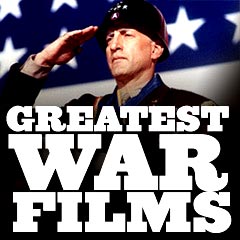
|
Greatest War Movies 1900s-1920s |
| Film Title/Year/Director, War-time Setting and Brief Description | ||
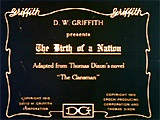
|
The Birth of a Nation (1915)
Hollywood producers did not recognize the box-office potential of propagandist war and anti-war films until the success of D. W. Griffith's influential Civil War epic adapted from Thomas Dixon's The Clansman. It was the first feature-length silent film and also a sweeping drama/epic. It focused on the effects of the war on two families - the Southern Camerons and the Northern Stonemans. The Camerons, headed by "Little Colonel" Ben Cameron, and the Stonemans, headed by politician Austin Stoneman, found themselves on opposite sides of the battle lines when War came. The Civil War exacted a personal toll on both families, only to be followed by the equally destructive Reconstruction period. Griffith linked the consequences of the war on their lives with the formation of the Ku Klux Klan. The highly controversial film included semi-documentary, panoramic battle scenes and other historical events during the Civil War era. |
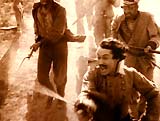 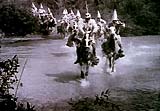
|
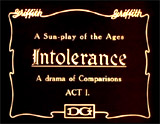
|
Intolerance (1916)
The greatest silent film ever made, this monumental 4-strand epic was deliberately designed to show man's inhumanity to man and the horrors of war so that audiences would reject war. The film ended with divine intervention interrupting the conflict. Three of the stories were based on historical fact: Medieval Paris France during the Reformation and the reign of Charles IX, including the slaughter of the Huguenots, the crucifixion of Christ in Judea, and the fall of Babylonia. Its complex, sometimes baffling, unwieldy construction and its pacifist themes may have contributed to its unpopular reception just prior to the US entrance into World War I. |
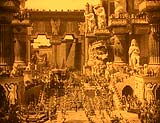
|
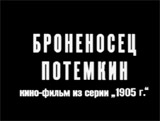
|
Battleship Potemkin (1925, USSR)
Legendary Russian auteur director Sergei Eisenstein's classic landmark and visionary film was released in the US in 1926, advancing the art of cinematic storytelling with the technique of montage (or film editing). Its most celebrated film scene, with superb editing combining wide, newsreel-like sequences inter-cut with close-ups of harrowing details (a woman with a bullet through her spectacles, troops in formation) - to increase tension, was the Odessa Steps episode. It was based upon the incident in 1905 when civilians and rioters were ruthlessly massacred. In the scene (with 155 separate shots in less than five minutes), the Czarist soldiers fired on the crowds thronging on the Odessa steps with the indelible, kinetic image of a baby carriage careening down the marble steps leading to the harbor, and the symbolism of a stone lion coming awake. |
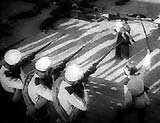 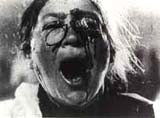 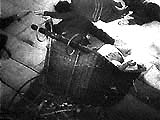
|
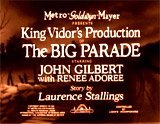
|
The Big Parade (1925)
A new kind of war film, and the first to realistically portray the horrors of battle and the struggle for survival by three soldier-comrades (a bartender, a riveter, and a millionaire's son) in the trenches. A still-powerful classic Great War, anti-war epic with compelling, realistic, brilliantly-staged battle scenes -- showing the virtually-unprotected front lines marching toward the enemy and getting picked off. This was the highest grossing silent film in its day. The film mixed grueling infantry action with bittersweet romance and a little comic relief. The war took its toll as many of the men died or were seriously wounded. The emotion-filled story focused on an American troop stationed in France with soldiers from different backgrounds. One American doughboy soldier James Apperson (John Gilbert) fell in love with a French peasant girl Melisande (Renee Adoree), and they were traumatically torn apart as the war carried them further apart, and he became an amputee. |
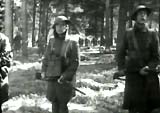 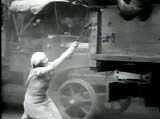
|
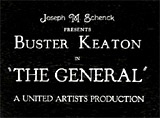
|
The General (1927)
Keaton created this great comedy silent film out of an authentic episode of American history during the Civil War - a story about a famous locomotive, though in real-life the locomotive was stolen by the Confederates. The two things devoted and foolish Southern Confederate engineer Johnny Gray (Buster Keaton) loved most in the world were his Southern belle sweetheart Annabelle Lee (Marion Mack) and his passionately-beloved locomotive named The General. When Northern spies stole the latter (with his kidnapped girlfriend on board), the intrepid Confederate heroically risked his life. He hijacked another locomotive, pursued them, and single-handedly took on the entire Union army in order to rescue both of his loves. Filmed against a backdrop of magnificently photographed Civil War battle scenes, it also contained one of the great chases in movie history. Realistic stunts (without stuntmen to double for Keaton), uncontrived, free-flowing set-pieces, non-stop motion, and a preoccupation with authenticity make parts of the film a visual history of the American Civil War. The film concluded with a climactic battle at a river gorge, with the dramatic crash of the pursuit train into the Rock River in the film's most spectacular scene - and the most expensive shot of the entire silent era. |
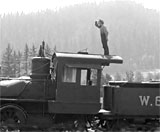 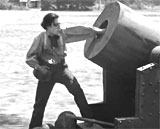 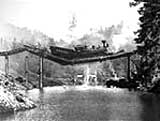
|

|
Wings (1927)
This silent and early anti-war film was the greatest of the early aviation epics with spectacular dog-fight combat sequences, and a spectacular reconstruction of the Battle of St. Mihiel. It was the first film (and only silent film) to be awarded Best Picture. It was the first film to introduce sound effects on a separate strip of film, and with dogfight scenes shot in the air (and not in the studio). Starring both "It" girl Clara Bow (as girl next door Mary Preston) and Gary Cooper (in an early role as Cadet White), it told the twisting romantic story of two aviators Jack Powell and David Armstrong (Charles "Buddy" Rogers and Richard Arlen) both in love with the same girl - Sylvia (Jobyna Ralston). |
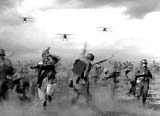
|
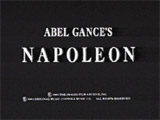
|
Napoleon (1927, Fr.)
Experimental French filmmaker Abel Gance's film, a visually revolutionary picture, was originally six hours long. It was partially filmed with panoramic, "triptych" Polyvision at its climax (three-screens side-by-side to create a wide-screen effect, later known by future generations as Cinerama). This meant that the film had to be shot with three synchronized cameras, and then projected on a gigantic, 3-part screens. 
|
|
(chronological by film title) Introduction | 1900s-1920s | 1930s | 1940s-1 | 1940s-2 | 1950s | 1960s-1 | 1960s-2 | 1970s | 1980s | 1990s | 2000s | 2010s |